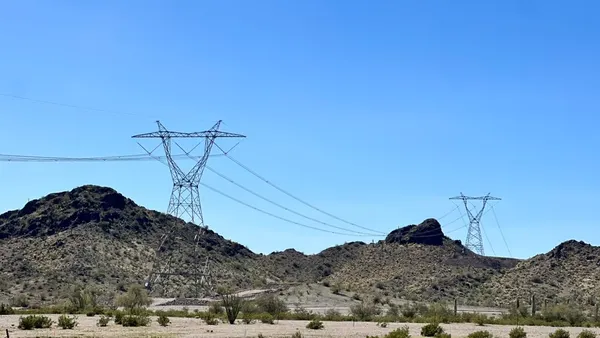Dive Brief:
- President Donald Trump on Tuesday signed an executive order aimed at protecting the nation's critical infrastructure from electromagnetic pulses (EMPs), which can disrupt technology and could potentially create widespread blackouts.
- The order calls for a government-wide policy to: improve understanding of EMPs' potential effects, strengthen critical infrastructure and improve national response plans. The order also calls for public-private coordination and federal research into improving EMP resiliency.
- The Edison Electric Institute (EEI), which represents investor-owned utilities, hailed Trump's efforts at protecting infrastructure. The Electric Power Research Institute (EPRI) in 2016 began to study how EMPs could impact the grid; that study and its recommendations are expected next month.
Dive Insight:
The utility sector has been watching EMPs as a threat for years, finding no easy solution to the pulses which could result from a natural event — such as a large sun flare — or a malicious attack that could involve detonating a nuclear device overhead.
In a statement, Energy Secretary Rick Perry called EMPs "a threat to our national security and energy security" and said the order "sends a clear message to adversaries that the United States takes this threat seriously."
The order clarifies federal agency roles and responsibilities, takes steps to improve information sharing between the government and private industry, and directs federal agencies to coordinate, in preparation for an EMP event.
The order also calls for identifying critical infrastructure at greatest risk from EMPs, improving understanding of the pulses' impacts, improving response plans and strengthening critical infrastructure to withstand the possible impacts.
EEI Vice President for Security and Preparedness Scott Aaronson applauded the order and the President's "ongoing focus on protecting critical infrastructure."
“How an EMP may impact critical infrastructure is an extremely complex issue that cannot be solved with a one-size-fits-all solution," Aaronson said. He added that "sound policy should be informed by sound science," pointing to EPRI's upcoming report, which is expected to include recommendations for "mitigation approaches and investments."
The order comes about a month after a Department of Homeland Security (DHS) official testified that a high-altitude nuclear detonation could have "potentially severe" impacts on the electric grid.
"Consequences of a successful nuclear EMP attack ... may include long-term damage to significant portions of the Nation’s electric grid," said Brian Harrell, assistant director for infrastructure security at DHS, told a Senate committee.
Harrell also said, however, that the intelligence community "currently has no specific, credible information indicating that there is an imminent threat to critical infrastructure from an EMP attack."














